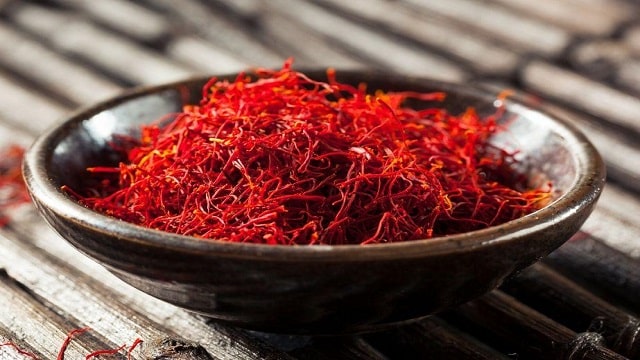Saffron is one of the most appreciated spices in cooking for its unique flavor and aroma. We explain how to toast saffron and what benefits it has to improve your recipes by enhancing its aroma and flavor.
Although the fine and delicate threads of saffron are already very aromatic and provide a unique touch to your recipes, roasting saffron will allow you to elevate your dishes to another level, taking full advantage of this valuable spice thanks to the roasting process. They can be found in any supermarket in small quantities since just a few will be enough for their flavor to be noticeable in the dish to which you add them.
For any recipe that requires saffron, it is generally added in natural strands, that is, without roasting. But, do you know what the result is of drying saffron by roasting it? Keep reading and you will see the effects on your dishes.
What is it and what is it for roasting saffron?
Roasting saffron is a culinary technique that consists of slightly heating the saffron strands before using them in your recipes to improve their properties by intensifying their flavor, aroma, and color to enhance your recipes. The process itself is carried out by exposing the filaments to a mild, controlled heat source for a short period of time.
In reference to the saffron that is sold, so you can get an idea of how valuable it is, each kilogram of unroasted saffron becomes 200 g of roasted saffron .
Benefits of roasting saffron
By applying a simple technique that requires nothing more than the strands themselves and a heat source, you can see all the benefits that roasting saffron provides.
Intensification of flavor and aroma
Roasting saffron enhances its aromatic compounds, giving your recipes a more concentrated flavor as well as an intensified fragrance thanks to the release of its essential oils.
Better dissolution
The tan filaments become more fragile with heat, facilitating their dissolution in a liquid medium, and resulting in a more uniform distribution of color.
Higher performance
By intensifying the flavor, color, and aroma of the saffron thread through roasting, it also provides a greater yield, since you will need to use less quantity to season your dishes.
How to roast saffron at home
Roasting saffron at home is a simple process that won’t take you too much time. We present 3 easy ways to do it.
In the pan
First of all, you will have to place a small frying pan over low heat, so that once it is hot, you can add the saffron strands on a sheet of aluminum foil (this way you will avoid burning and making your dishes bitter ). Stir the strands with a wooden spoon for a few seconds (5 or 6 seconds will be enough for the fine strands to toast).
In the microwave
If you prefer to toast saffron in the microwave, we recommend that you wrap the strands in baking paper so that they are as protected as possible. Likewise, the temperature must be controlled, which is why we recommend heating the strands for 15 seconds and at half power (300 w).
It is important not to exceed the cooking time because if you do so, in addition to running the risk of the saffron losing its aroma due to the evaporation of its essential oils, it will burn, ruining the flavor and color of the strands.
In the oven
If you choose to use the oven, our recommendation is that the temperature does not exceed 160 ºC. To toast saffron in the oven, form a small packet with aluminum foil, place the strands inside, and toast it for a couple of minutes.
Saffron roasting utensils
Depending on the method you use to roast saffron, you will need some basic kitchen utensils. If you are going to toast the saffron stigma on the hob, you will need a small non-stick pan as well as aluminum foil and a wooden spoon to stir. If you toast saffron in the oven, you will have to use aluminum or baking paper in addition to the oven tray. And if you choose to use the microwave to toast, all you need is a little baking paper and a microwave-safe plate.
Tips for roasting saffron
If you want the saffron to roast but not burn and give an unpleasant bitter taste to your dishes, take note of our tips:
- Control cooking time
- Always use a low heat
- Don’t forget to wrap the strands in aluminum foil or parchment paper.
- Roast in small quantities
- Remove the strands quickly from the heat source once roasting is complete
Uses of roasted saffron
Roasted saffron has many culinary uses that can provide a unique flavor, aroma, and color to your dishes. You can add roasted saffron to paellas and rice dishes, stews, stews, soups, broths, and even recipes from other culinary cultures such as Moroccan couscous with vegetables or chicken pie. In the same way, you can season some Sicilian arancini or a Brazilian galinhada with a few strands.
If you feel like trying roasted saffron in different recipes from here and there, don’t miss the best recipes with saffron: a wide selection where you will find all kinds of regional dishes and international recipes.
